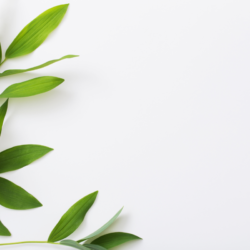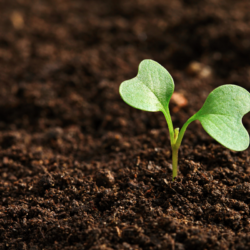Originally from the lakes of Chad, and currently grown in basin s, spiru lina is particularly recommended for its nutrient richness.
There are four families of algae: green (Chlorophyceae), brown (Phaeophyceae), red (Rhodophyceae) and bl ue (Cyanophyceae).
Presentation:
Bl ue algae tend to be terrestrial and very small. Cyan ophyceae are first and foremost prokaryotic bacteria. They play an important role in photosynthesis, transform energy and fix CO2 and release O2. Some can fix the nitrogen. It is indeed interesting to know that they contributed to life on Earth through their production of O2 by photosynthesis. They are also responsible for great oxidation about 2 billion years ago. In particular, they have contributed to the first biological carbon well, and are capable of producing limestone.
Sp irulina is also the traditional food of the Kanembous of Chad and is a testimony of consumption by the Aztecs, incas and pre-Incas, reported by the conquistadors. It is one of the oldest living microorganisms on our planet. Most often considered a microalgae, spiru lina is more precisely a cy anobacteria. It has a system of photosynthesis, that is, it uses, like plants, solar energy to synthesize its organic molecules. It therefore captures light through two pigments: Chlorophyll (green) and Phycocyanin e (red blue).
Since the 1970s, spirulina has been considered a health food and a dietary supplement. This new use has led scientists to take an interest in this cyano bacteria wi th multiple virtues.
To develop spiru lina n eeds fresh water, mineral salts and sun. Phycocyanine is characterized by its unique blue-red colour. It is the main pigment of sp irulina and also the most active.
In dry spiruli na, Phycocyanin is only 15% present and requires a substantial digestion phase before being assimilated. Thus, the benefits o f phycocy anin from a
dry spirulina are less. Glitter, tablets and other forms of d ry spir ulina do not make it easy to assimilate p hycocyanin. A digestion phase is needed in order to access the active molecule which implies a loss of 30 to 40% of the intake.
Identity card:
- Firstname: Spirulina
- Botanical surname: C yanophyceae
- Nickname : Blue Algae
- Active molecule: Phycocyanine
- Galenic shapes available: Powd er, glitter, t ablets or ca psules
- Usual dosages: 2 to 10 grams per day
Key components of the plant:
- Protei n (60-70%) (higher in protein than meat) with plugged-in amino acids
- High molecul ar weight polysaccharides: immolina
- Nucleic acids (30% DNA and 70% RNA)
- Phycocyani ne (combination of a phycobiliprotein family protein and photosynthesis-derived water-soluble pigments)
- Rich in iron, vitamins A and B12, carotenoids, ma nganese, ch romium, sodium and potassium
- Source of calciu m, magnesi u m, zi nc , copp er , vitamins C a n d E, phycocya nin (natural blue pigment, food colouring and antioxidant)
Plant properties:
Sp irulina improves n utrition. Clinical trials have shown that taking a daily dose of 10 grams of spirulina for 4 t o 6 weeks would be sufficient to cure a severely malnourished child. It is used in Africa to support antiretroviral treatment in people with HIV. It would lead to weight gain, CD4 cell gain, and decreased opportunistic infections.On the other hand, it can help manage obesi ty at the 1 gram-per-day dose.
This algae with immun o-stimulating, im munomodulatin g a nd anti-inflammato ry effects (by increasing the expression of TNF-alpha, IL-1béta and COX-2, increases tone by its vitamin B12 richness. In particular, it impro ves muscle detoxific ation and increases anti-oxidant enzymes per action on reactive oxygen species.
They would also stimulate the proliferation of neural stem cells and bone marrow (in synergy with blueb erry, g reen tea or vitamin D3), and hav e properties
neuroprotective, in relation t o the process of ischemia/reperfusion by improvement of Parkinson’s disease (decrease in the activation of microglial cells), by protection of dopamine neurons (polysaccharide), and by interaction with the microglia.
Sp irulina also allows the body to fight viruses more effectively by stimulating n atural defenses. It produces an ana lgesic eff ect by limiting nociception by inhibiting inflammatory phenomena. It also helps regulate oxidative stress thanks to its anti-radi cal properties.
This multi-be nefit blue algae limits aches and speeds up recovery by carrying more oxygen to the muscles, it also helps detoxify the liver and kidneys (heavy metal chelation) and facilitates the reabsorption of lactates in the Krebs cycle.
Indications of the whole plant:
Adjuvant in th e fight against c ance r, cellular aging, i nfec tious diseases, a nd immu ne system declines, spiru lina has a major effect in the functioning of the bone marrow (stim ulation of erythropoiesis). It is commonly used in undern utrition, asthenias and iron deficie ncy anemias.
Possible side effects and precautions:
- Digestive disorders, possible nausea
- Rare allergies





